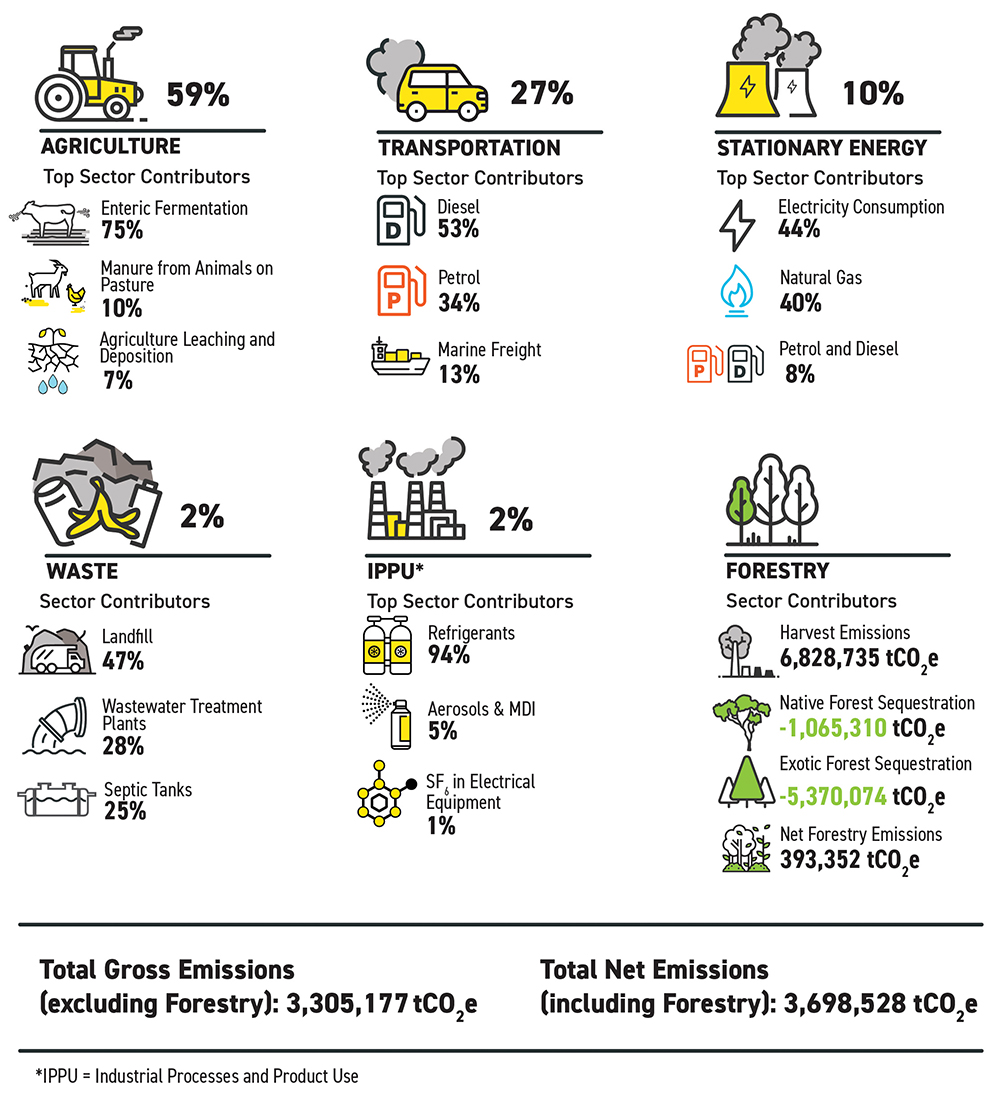Northland’s climate issues and emissions
How climate change is affecting Northland
Northland’s stunning coasts and forests, native wildlife and subtropical environment make it a highly desirable place to live. Our economy relies on primary industries – agriculture, forestry and fishing – that are fundamentally linked to the natural world.
But we are also living in te ao hurihuri, the ever-changing world. The past and ongoing release of greenhouse gases is already altering the environment that supports us, threatening to cause severe social and environmental disruption.
Rising sea levels eat away at the coastline we love to play around. Severe storms and floods inundate communities more frequently, causing damage and isolation. Our water supply systems are vulnerable to prolonged droughts. The atmosphere is warming and oceans are becoming more acidic, putting our indigenous biodiversity and ecosystems under stress.
In the interests of unborn generations, our communities and our precious taonga, we must take decisive climate action now.
Reducing our carbon footprint
Roughly 86% of Northland’s regional emissions come from agriculture and transport. The remainder come from stationary energy, waste and industrial processes and product use.
While New Zealand’s overall emissions are small in the global picture, we have some of the highest emissions per capita in the world. Everyone must play their part, a future where our people, communities and the health of our planet can thrive depends on our collective and continued bold leadership.
Te Taitokerau Greenhouse Gas Emissions 2022
Te Tai Tokerau’s FY22 Emissions Footprint - Click/tap to expand.
Te Tai Tokerau GHG Emissions Inventory 2022 Report
What is this report?
- A regional emissions profile on Northland for the FY 2021/22 using the Global Protocol for Community-Scale (GPC) Greenhouse Gas Emissions methodology.
- Please note the data is different to Stats NZ regional findings which predominantly reports emissions by economic activities.
- This project was delivered on behalf of Northland Regional Council, Whangārei District Council, Kaipara District Council and Far North District Council.
Why we’ve done it?
As identified by the Intergovernmental Panel on Climate Change unless countries take action across the globe to reduce greenhouse gas emissions, we will face the increasing effects of climate change. Strong and urgent action needs to be taken to limit the emission of greenhouse gases in order to mitigate the temperature impacts.
New Zealand signed the Paris agreement, which sets a target of limiting global warming to well below 2°C above pre-industrial levels. NZ's international commitment has now been reinforced in domestic legislation in the form of temperature targets, emissions budgets, and an emissions reduction plan - see the Climate Change Response (Zero Carbon) Amendment Act 2019. It is important that regions take action to support a reduction of the emissions so that NZ can meet its domestic targets and support the global effort.
Next steps
The regional emissions profile gives us a good understanding of where we can focus effort to reduce emissions. To help formulate a path forward, identify opportunities and risks, we plan to hold a forum in 2024 where partners and stakeholders will be invited to contribute ideas.
Collaboration is going to be imperative to drive multi-sector coordination, encourage the transition to a lower emissions future and maximise opportunities across all economic sectors. We want Northlanders to thrive and prosper.
Please share any thoughts you might have on how we can achieve this, or register your interest in participating in this korero by emailing climateaction@nrc.govt.nz

